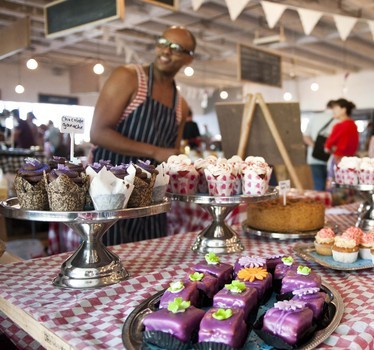Brent Meersman worries that putting parmigiana before Marikana will turn us into a nation of gormless gourmands.
‘You are what you eat” has never rung truer. The revolution has failed. Consumerism and globalisation have triumphed, and it has been done through food.
Where once there was a rebellious middle-class youth, today there are little gourmands more interested in lemon grass than marijuana, in menus rather than manifestos, in mixing pisco sours rather than lobbing Molotov cocktails. It’s no longer the doors of culture they want to see opened for the proletariat, it’s the pantry.
Dinner conversation among the chattering classes has turned from Marikana to parmigiana, from the arms deal to where to get the best veal, from discussing the secrecy Bill to fussing about what doesn’t go with dill. What piques us is not the Nkandla scandal but cooking à la king.
Foodism is supplanting art and culture. We prefer fettuccini to Puccini; bok choy to Tolstoy.
As a food columnist I feel partly responsible.
The change in my lifetime has been remarkable. When I grew up in the 1980s, the culinary culture of South Africa was dire, sexist and very unhealthy.
But, in my case, the die was cast early. As an eight-year-old on the school playground the other kids would run away screaming when I opened my lunch box of stinky Roquefort cheese sandwiches, courtesy of my Belgian father.
At home, we had witloof (chicory — almost unheard of in those days) and ate raw herring. On the rare occasions my school friends visited, they thought my family was trying to poison them.
They were accustomed to braais and potjies, beef and potatoes with gravy powder, chicken and white rice with canned mushrooms, cauliflower with instant white sauce, I&J fish fingers and slap chips. For a while, the snackwich machine cheered everyone up.
Coffee was instant chicory. Pasta was macaroni baked with slices of watery tomato and melted sweetmilk cheese. When the first packets of dried spaghetti arrived, South African housewives cooked it until it had the texture and taste as close as they could get it to spaghetti in a tin. Bolognaise was made with sugar and a packet of tomato soup.
Going gourmet
Today……… Full story in Mail & Guardian






